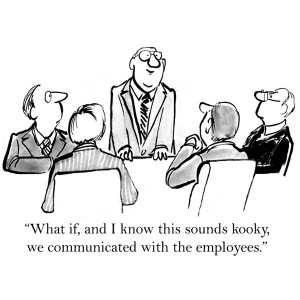How to be known as someone who delivers
Want to be known as someone who delivers? Then start saying this: “I can’t promise that“.
Or here’s an alternate “I can promise that, this is what I need from you“.
When do you say this? Whenever you are asked to do something that you are not sure you will be able to get done.
Most of us would prefer to be known as someone who keeps promises. So this requires us to only make promises that we can keep.
Yet we (me included) agree to stuff we can’t get done all the time!
Why?
Because we would rather wear long-term damaging workload stress in order to avoid the short-term anxiety of disappointing someone in authority.
If, however, you want to work in an organisation where people are trusted, people speak the truth, where promises are kept, and where respect is the norm…..someone has to go first.
And this requires bravery….because it might not work out well for you!
But one thing’s for sure…..if you’re waiting for senior or executive management to sort this out…that is not happening. Because they are just as trapped in this as you.
No change without anxiety.





